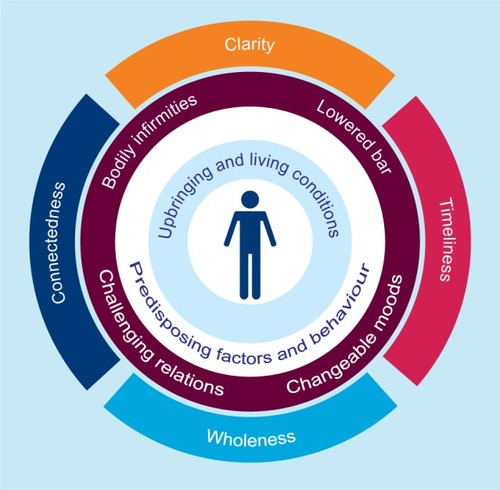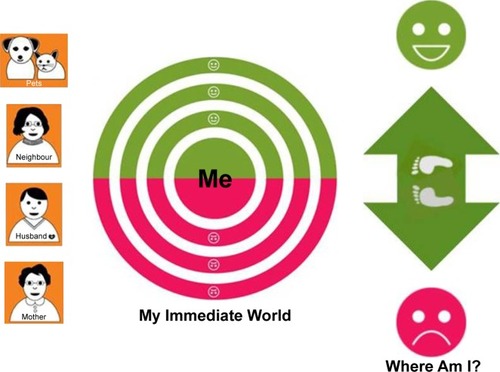Figures & data
Figure 1 “The Vulnerable Person” model.

Figure 2 Examples of PEASCI dialogue tools.
Abbreviation: PEASCI, person-centered education approach and tool kit targeting self-management of chronic illness.

Table 1 Design principles and overall objectives guiding the development of PEASCI
Table 2 Overview of dialogue tools
Table 3 Educator assessment of PEASCI tools
Table 4 Efficacy of Our Rules, My Immediate World, and Where Am I?
Table S1 Educators, participants, and settings
Table S2 Use of each tool and contexts in which 65 educators tested tools
